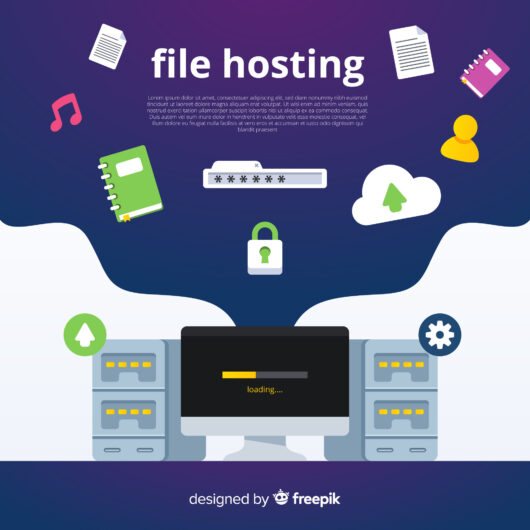In the realm of computer networking, a little-known but powerful tool resides on your system, often hidden in plain sight: the host’s file. Understanding how to manipulate this enigmatic file can provide a range of benefits, from enhancing security to optimizing web access. In this comprehensive guide, we’ll unravel the mysteries of the host file and teach you how to edit it on Windows, Mac, and Linux systems.
What is the Hosts File Used For?
To appreciate the significance of the host file, let’s first grasp its primary purpose. The host file acts as a local DNS (Domain Name System) resolver, enabling the translation of human-friendly domain names into IP addresses. In essence, it serves as a map to direct your computer to specific web destinations. This can be used for various reasons, including:
Enhancing Security
The host file can be an effective security tool. By redirecting known malicious websites to a harmless IP address, you can protect your system from potential threats. This means that even if your antivirus or firewall fails to detect a harmful site, your host file can act as an additional layer of defense.
Local Development
Web developers often use the host file to resolve custom domain names to local servers. This allows them to test and develop websites locally before deploying them to the web. By doing so, they can ensure that their websites function correctly in a controlled environment.
Bypassing DNS
In some cases, you may want to override the global DNS settings to reach specific web resources. The hosts file allows you to do this by manually associating domain names with IP addresses. This can be useful for accessing resources on a network that aren’t publicly accessible.
Improving Speed
The host file can also speed up your web access. By associating frequently visited websites with local IP addresses, you reduce the time it takes for your system to resolve these domain names. As a result, your web browsing becomes faster and more efficient.
Now that you understand the fundamental role of the host file, let’s delve into how to edit it on different operating systems.
Editing the Hosts File on Windows 10 or Windows 11
Windows 10 and Windows 11 users can take advantage of this feature to customize their web experience. To edit the host file on these platforms, follow these steps:
Locate the Host File
The host file can be found at `C:\Windows\System32\drivers\etc`. You’ll need administrative privileges to edit it. The “etc” directory contains various configuration files, and the host file is one of them.
Choose an Editor
You can use any text editor to open the file. Notepad is a good choice. To run Notepad with administrative rights, right-click the Notepad icon and select “Run as administrator.”
Edit the Host File
Open the host file in your chosen editor. It should look something like this:
“`plaintext
Copyright (c) 1993-2009 Microsoft Corp.
This is a sample HOSTS file used by Microsoft TCP/IP for Windows.
…
“`
To add an entry, simply append it at the end of the file. Entries are in the format `IP Address Domain Name`, with each entry on a new line.
Save Your Changes
After adding your entries, make sure to save the file with the same name, “hosts,” and without any file extension. This is crucial to ensure that the file is recognized and used by the system.
Flush DNS Cache
To apply your changes, open Command Prompt with administrative rights and type the following command:
“`shell
ipconfig /flushdns
“`
This command clears the DNS cache, allowing your system to recognize the updated host file.
Editing the Hosts File on Windows 8 or 8.
The process for editing the host file on Windows 8 and 8.1 is nearly identical to that of Windows 10 and 11. Follow the same steps mentioned earlier, as the file location and structure remain consistent across these Windows versions.
Windows 7
For those still using Windows 7, editing the host’s file is just as straightforward. Follow the steps detailed for Windows 10 or 11, and you’ll be able to harness the power of the host file on this classic operating system.
Edit The Hosts File On Ubuntu
Now, let’s shift our focus to the Linux realm, specifically Ubuntu. Ubuntu uses the same host file concept as Windows, albeit with a different location and permissions. To edit the host file on Ubuntu, perform the following steps:
Open Terminal
To begin, open a terminal window. You can do this by pressing `Ctrl + Alt + T`, which is a common shortcut for opening a terminal.
Access the Hosts File
The host’s file on Ubuntu is located at `/etc/hosts`. You’ll need superuser (administrative) privileges to edit this file.
Choose a Text Editor
You can use your preferred text editor to open the host’s file. For example, “nano” is a straightforward choice. To open the host’s file with “nano,” use the following command:
“` shell
sudo nano /etc/hosts
“`
Edit the Host File
Once the file is open, you can add your custom entries in the format `IP Address Domain Name`, one entry per line. It should look something like this:
“`plaintext
127.0.0.1 localhost
::1 localhost ip6-localhost ip6-loopback
fe00::0 ip6-localnet
ff00::0 ip6-mcastprefix
ff02::1 ip6-allnodes
ff02::2 ip6-allrouters
“`
Save and Exit
In the “nano” text editor, you can save your changes by pressing `Ctrl + O` and then exit by pressing `Ctrl + X`. Be sure to save your changes before exiting.
Flush DNS Cache
To apply your changes, run the following command to restart the Name Service Cache Daemon (nscd):
“` shell
sudo /etc/init.d/nscd restart
“`
This will ensure that your system recognizes the updated host file.
Change the Hosts File on Any macOS Version
Mac users can also harness the power of the host’s file to tailor their web experience. To edit the host file on macOS, regardless of the version, adhere to these steps:
Access Terminal
To begin, open Terminal from the Utilities folder in the Applications folder. You can do this by searching for “Terminal” using Spotlight or by navigating through the Finder.
Open the Host File
On macOS, the host’s file is located at `/private/etc/hosts`. This file is also protected and requires administrative privileges to edit.
Choose a Text Editor
Just like in Linux, you can use your preferred text editor to open the host’s file. For instance, “nano” is a reliable choice. To open the host’s file with “nano,” use the following command:
“` shell
sudo nano /private/etc/hosts
“`
Edit the Host File
The structure of the host file on macOS is the same as in Ubuntu. Add your entries in the format `IP Address Domain Name`, one entry per line.
Save and Exit
In the “nano” text editor, you can save your changes by pressing `Ctrl + O` and then exit by pressing `Ctrl + X`.
Make sure to save your changes before exiting.
Flush DNS Cache
To apply your changes, run the following command to restart the Multicast DNS (mDNS) responder:
“` shell
sudo killall -HUP mDNSResponder
“`
This command ensures that your macOS system recognizes the updated host file.
Why Isn’t The Hosts File Blocking Connections?
Now that you have learned how to edit the host file on various platforms, it’s essential to understand why it may not always work as expected. There are a few common issues that can prevent the host file from blocking connections effectively:
Caching
Some systems, both Windows and Unix-based, aggressively cache DNS records. This caching can lead to delayed updates when you make changes to the host file. If your changes are not taking effect immediately, it may be due to DNS caching.
Incorrect Syntax
A small typo in the host’s file can render it ineffective. Entries must be correctly formatted, with the IP address separated from the domain name by whitespace. A missing space or a typographical error can cause the entire entry to be disregarded.
Security Software
Antivirus or security software running on your computer may override the host file. These applications often include their own DNS resolution mechanisms, which can bypass your host’s file settings for added security. If you suspect that security software is interfering with your host file, consult the software’s documentation to adjust its settings accordingly.
In cases where the host file seems to have no effect, consider these factors and perform troubleshooting accordingly. Remember to clear DNS caches and check for syntax errors in your entries to ensure that your host file is functioning as intended.
Wrap up:
The host file, despite its simplicity, is a potent tool that can enhance your online experience. With the ability to redirect domain names to IP addresses, you gain control over your web access, security, and local development. Whether you’re on Windows, macOS, or Linux, mastering the art of host file editing can prove invaluable.
In this guide, we’ve walked you through the process of editing the host file on Windows 10, Windows 8/8.1, Windows 7, Ubuntu, and macOS. We’ve also highlighted some common issues that may impede its functionality. Armed with this knowledge, you can harness the full potential of the host file, optimizing your online experience and bolstering your system’s security.
FAQS:
1: What is the host file, and why should I edit it?
The host file is a local DNS resolver that maps domain names to IP addresses. Editing allows you to customize web access, enhance security, and optimize local development.
2: Can I edit the host file on Windows 10 without administrative privileges?
No, administrative privileges are required to edit the host file on Windows 10, as it’s a system file. You’ll need to run your text editor as an administrator.
3: Is it possible to revert changes made to the host file?
Yes, you can always undo changes made to the host file by removing or commenting on the entries. This will restore the default behavior.
4: What are common issues when editing the host file?
Common issues include DNS caching, syntax errors, and interference from security software. Clearing the DNS cache and ensuring correct syntax can help resolve these problems.
5: Can I use the host file to block websites or redirect them to specific pages? Yes, you can use the host file to block websites by redirecting their domain names to a harmless IP address. It’s an effective way to enhance online security and control web access.
- What is a Hotmail? - April 26, 2024
- What is a Console? - April 25, 2024
- What is Full Stop Punctuation? - April 21, 2024



